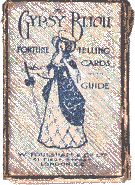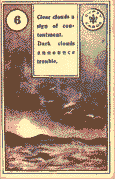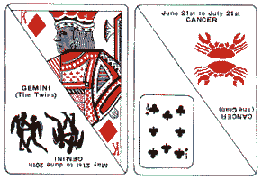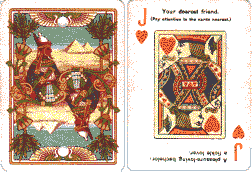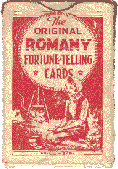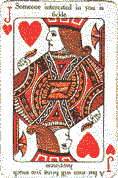Cartomancy, Oracle and Divination Cards
Playing cards are used for fortune-telling, predicting the future or even as a psychological adjunct to folk medicine and therapy. Turning another card illumines the moment and new clarity emerges.
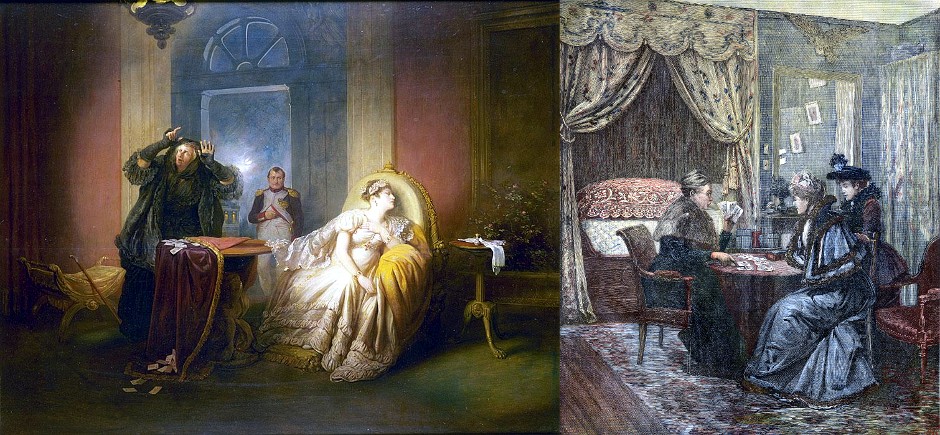
Some believe that cards drawn in a reading are somehow reflective of the individual's current situation and state of mind, with a meaningful connection that can offer insights... as though there was an organising force behind events, a mystical or a “spiritual” meaning that can be intuited from the layout of the cards.
Divination was practised by the ancient Greeks, and by the druids, the Celtic priests of the iron age, who consulted various types of omens, runes, bird droppings or holy books in an attempt to seek guidance from the gods or other supernatural entities. Needless to say, divination was considered a pagan practice and forbidden in the early Christian church. Early scientific notebooks contained alchemical and medical recipes, texts on geomancy and divination (often translated from Arabic texts or transmitted from ‘ancient physicians in Babylon’), natural philosophy and miscellaneous notes on astrology, dream interpretation, etc.
Above: two examples of early 18th century Fortune-Telling cards. 1. English Oracle cards, 1714; 2. 'Geistliche Karten', Germany, 1718, based upon Biblical counsel.
Knowledge of cartomancy came from an oral folk transmission totally independent of literacy which was ultimately a Gypsy folk tradition. Gypsies were a unique nomadic nation that migrated from India, through Romania, Hungary and Slovakia to the Czech Republic and Europe. They brought the ways of Indian mysticism and divination with them. For a time all divinatory and esoteric knowledge was erroneously attributed to “ancient Egypt”. Fortune telling with playing cards, or cartomancy, was popularized by the Gypsies in medieval Europe after the invention of playing cards [Keizer, 1999].
From the 16th to the 18th centuries Spanish sources offer a lot of information about cartomantic and magical uses of playing cards, where they had been incorporated into the healer's repertoire of methods. An early example is a reference by Pedro Ciruelo (1538) to fortune-telling using dice, playing cards or handwritten cards ("Estas suertes se echan en muchas maneras; o con dados o con cartas de naipes o con cédulas escritas"). Playing cards are used in much of Spanish-speaking America for fortune-telling, predicting the future or even as a psychological adjunct to folk medicine and therapy. The tradition goes back many centuries.
Etteilla’s book on cartomancy, published in 1770, introduces cartomancy as a form of entertainment which alleviates boredom and stimulates reflection as one seeks answers to issues such as marriage or romance. He also points out that it is a relatively safe activity with less financial risks than gambling , and also cautions readers to be sceptical in that the outcomes are subject to chance.
• See excerpt►
Queen of Hearts
“Lady Coventry’s Card”. The said Lady Coventry visited a fortune-teller who drew this card from the pack three times running. The first time the seer said “You will be rich,” the second time “You will marry a lord” and the third time “You will die young”. She did all three.
Playing cards were used in England for fortune telling in the middle of the 17th century, if not earlier. Cartomancy seems to have been practiced elsewhere much earlier, particularly France, where there had been a revival of interest in fortune-telling, the occult, prophecy, clairvoyance, etc., perhaps inspired by the prophecies of Nostradamus (1503-1566) in the 16th century. By the end of the 17th century Britain's Renaissance had reached its zenith. The world was fraught with wonders, and the learned men of the day were constructing elaborate new schemes to encompass the whole of knowledge. There was a society of fortune tellers in London who called themselves the Mercurii of London.
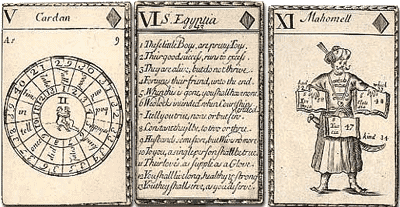
The cards shown right were published in the second half of the seventeenth century and are an example of English Divination or Oracle cards from this period. They involve looking up the prophecy by following a series of rules, reminiscent of numerology and dice throws, so that the answer is read on a specific card read more →
Dr. Flamstead’s and Mr. Patridge’s New Fortune-Book containing their new-invented method of knowing one’s fortune by a pack of cards (1729) appears to be the oldest book with instructions on fortune-telling-with-cards in the English language more →
The cards shown below appear to follow Flamstead and Patridge’s system.
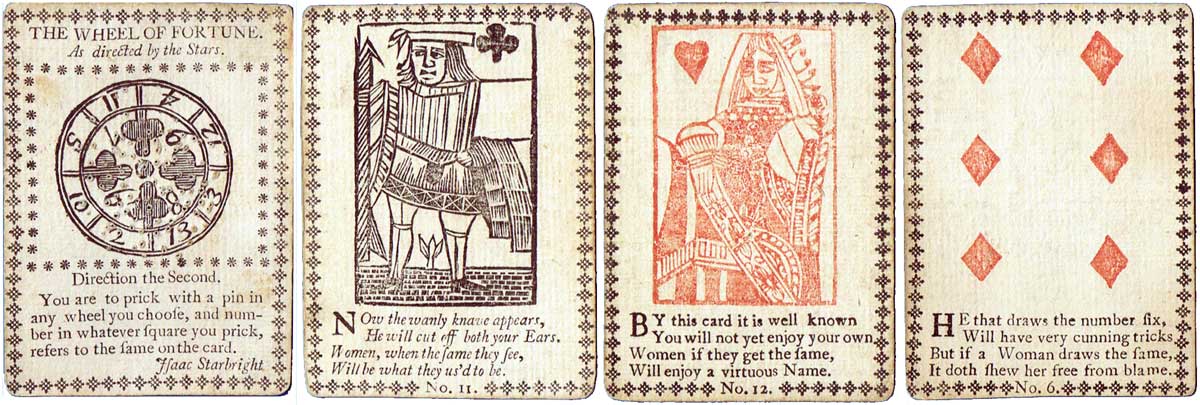
Above: Fortune Telling cards, probably published in London, c.1770. Images courtesy John Sings see more →

The cards shown below are from an English Fortune Telling pack of c.1800 by an unknown artist / engraver with a distictive repertoire of imagery resembling the sets of proverbial cards which were aids to wisdom more →
Generally, that is to say in a large majority of packs, the 'fortune' is printed at the bottom of the card, beneath an allegorical illustration depicting the predestined outcome. Some packs are more engaging than others. The fortunes in the deck shown above appear to derive from the text of “Every Lady’s Own Fortune-Teller” 1793► (See p.54 onwards).

John Wallis published “The Gypsy's Last Legecy” or “New Pack of Fortune Telling Cards” in c.1806. This was republished c.1820/30 by his son Edward Wallis with the title “Cards of Destiny” or “Gipsey Predictions”. There are two sets of cards, one for ladies and one for gentlemen and an instruction card. The participants use the cards to ask questions of the opposite sex about the future.
Cartomancy was very popular in Spain.
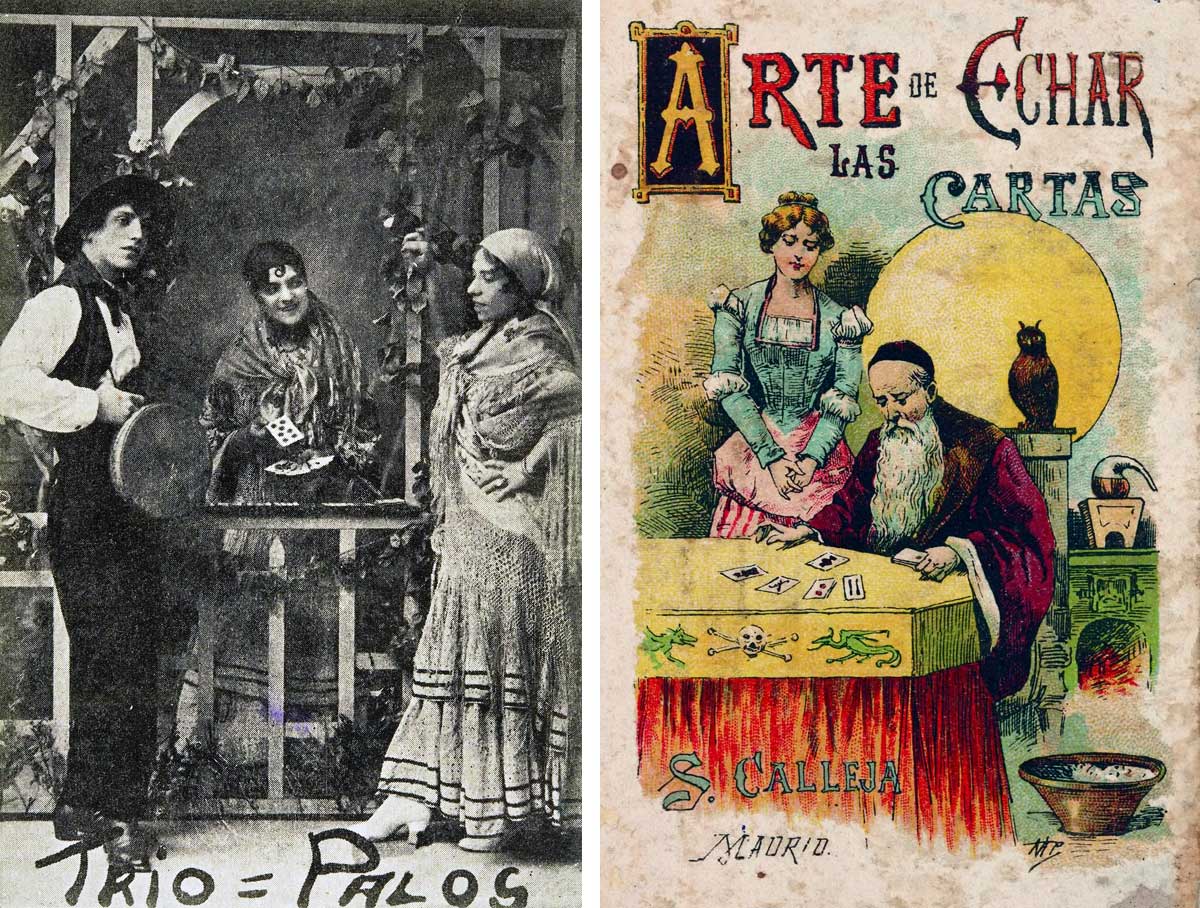
Above: 1) Trío Palos, Cartomancia, showing gypsies, c.1910. 2) Arte de echar las Cartas, Saturnino Calleja, Madrid, depicting an alchemist, c.1910-1915. Biblioteca Nacional de España.
• Moreno Durán, Teodomiro (1864-1933): “Los maravillosos secretos de los naipes: arte completo de echar las cartas” (BNE) contains interpretations for all 78 esoteric tarot cards.
• Baraja cartomántica Chocolates Nelia, c.1932.
“Arte de echar las cartas por medio de la baraja española: seguido de las profecías gitanas y de una detallada explicación de cada uno de los naipes”, Saturnino Calleja, Madrid, 1876. Biblioteca Digital Híspanica: Arte de echar las cartas►
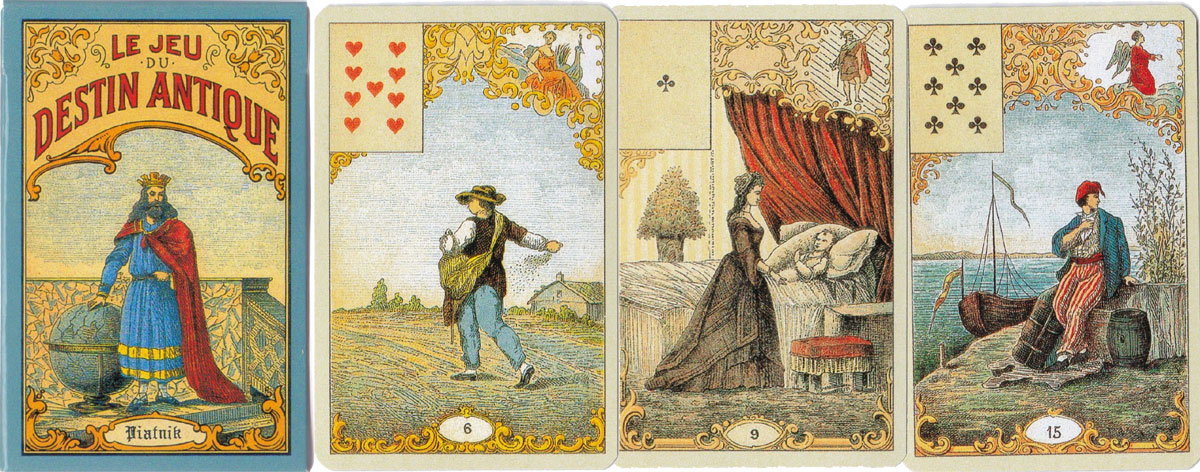
Above: Le Jeu du Destin Antique fortune-telling cards published by Piatnik in 1986, based on 19th century originals by Grimaud more →
Patent Applications
A number of speculative “useful improvements in playing cards” were invented and patented over the years, presumably granting exclusive rights but not necessarily ever getting published, incorporating aspects of palmistry or cartomancy with interesting symbols and design layouts.
In 1873 Hammatt Billings, of Boston, Massachusetts, submitted a patent application for a set of Cabalistic Playing Cards►
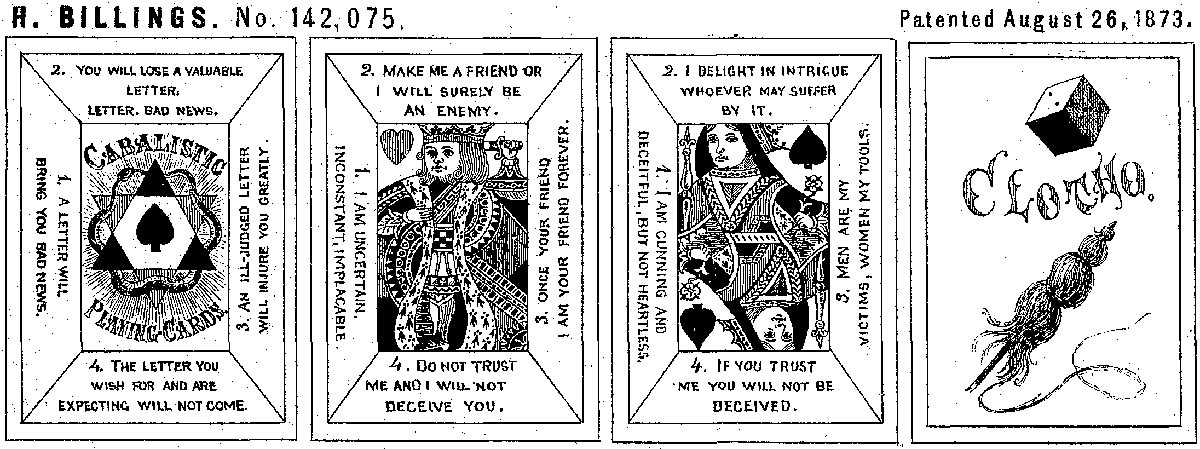
Above: Cabalistic playing cards invented and patented by Hammatt Billings, 1873. “My invention consists in a playing card which not only bears the sign indicating its ordinary name when used in the more common games, but also a sign, whether letters or figures, or both, indicating its name and signification when used in the game of fortune telling.” see more►
In 1903 Sarah A. Moulton and Luther V. Moulton, of Grand Rapids, Michigan, submitted a patent application for a set of Cartomancy Cards►
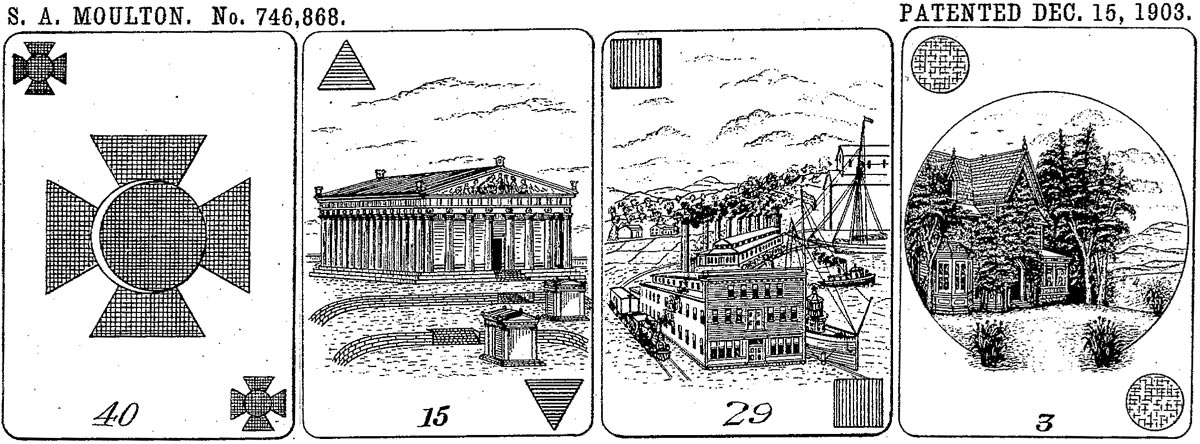
Above: cartomancy playing cards invented and patented by Sarah A. Moulton, 1903. “The object of my invention is to provide playing cards with a single series of symbols adapted to serve in place of the symbols of the ordinary cards and at the same time well adapted for educational purposes and for cartomancy.” see more►
In 1903 A. J. Seymour, of Buffalo, New York, submitted a patent application for a set of Palmistry Cards►

Above: playing cards depicting aspects of Palmistry invented and patented by A. J. Seymour of Buffalo, New York, 1903. “This invention relates to a card game which embodies in a fanciful and amusing manner some of the features or characteristics upon which chirognomy or palmistry is based. The object of my invention is to provide a novel deck of playing-cards which renders card games more interesting and entertaining.” more►
|
|
|
|
[From "The Gypsy Bijou Fortune Telling Cards" guide, by Minetta. Published by Foulsham & Co., London, c.1910 (36 cards)]. Illustration right: card no.6: "Clear clouds a sign of contentment. Dark clouds announce trouble." Minetta was the author of another published work on the 'Science of Card Fortune Telling' which claims to make the reader become an adept. A crystal ball is also advertised in the booklet, to be sold separately. Click here to see Lenormand pack by Müller See also: Cartes Lenormand by H.P. Gibson. Note: Mary Greer has shown that the earliest forerunner of the Lenormand cards is a 1796 book in English. See her blog: Mary K. Greer's Tarot Blog→ |
Carreras Fortune Telling Cards, 1926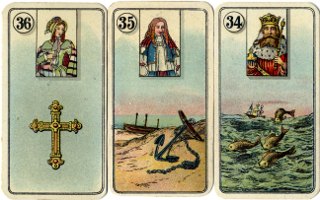
The Carreras Fortune Telling Cards (36 cards) were published in 1926 for W.D. & H.O. Wills, Bristol, and issued by Carreras Ltd in various sizes and formats, and are of the same type as the above example. The cards were printed by chromo-lithography by B. Dondorf in Germany. A single card was enclosed inside every packet of “Black Cat” cigarettes. See also: Cartes Lenormand by H.P. Gibson. Right: cards no. 36, 35 & 34 from the narrow size edition with figure inserts. According to the guide booklet, which could be obtained separately, the Cross is always a bad foreboding and warns of bad luck. The Anchor is a favourable sign suggesting fidelity in love, profitable business and an overseas undertaking. The Fish predict good fortune and luck in your undertaking abroad. The booklet accompanying the pack describes the cards as “those used by Mlle Silvia d'Arville's grandmother, who predicted Napoleon's victories, and his ruin…”. |
|
Jack of Diamonds: For reasons apparently no longer known, in the 18th century the English referred to this card as “Jack Shepherd”. In fortune-telling circles the card usually indicates events involving someone who is very rich. Roddy Somerville comments: “As a result of a visit to the Executions exhibition at the Museum of London Docklands last Saturday (visit website), I may be able to solve this mystery. Jack Sheppard (note the spelling) was a notorious, daring and much talked about criminal executed in 1724. He was also known as "Honest Jack". There is an extensive entry about him in Wikipedia: Jack Sheppard. It seems quite likely that the Jack of Diamonds got its nickname from him”. - RS Picture Show Fortune Telling Cards, 1930
Left: King of Diamonds/Lewis Stone: "… a kind hearted, loving man of fair complexion considering marriage or some important change.". Eight of Clubs/Cancer (The Crab): "People born under the sign of cancer are very difficult to understand…" The pack comes as a series of uncut sheets of 16 cards each, printed in red and black only. The full divinatory interpretation for each card - upright and reversed - is printed on the back of the cards. See more → |
Rameses Fortune Telling Cards, 1910
Left: back design from "The Rameses Fortune telling Cards" showing an Egyptian scene. Jack of Hearts: "Your dearest friend (pay attention to the cards nearest)" Reverse: "A pleasure loving bachelor; a fickle lover". The pack comprises an ordinary pack of 52 cards, plus one Joker or 'Subject' card, with interpretations printed at the top and foot of each playing card. An Instructions leaflet contains a treatise on how to give readings. |
Romany Fortune Telling Cards, 1935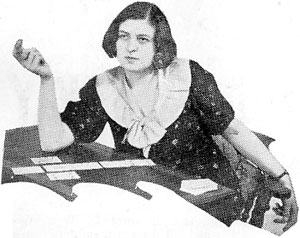
Above Left: box from "The Original ROMANY Fortune telling Cards" showing a gypsy by a campfire, reading cards. Jack of Hearts: "A fair man will bring you much happiness" Reverse: "Someone interested in you is fickle". The pack comprises an ordinary pack of 52 cards, plus one Joker, with normal and reversed interpretations printed at the top and foot of each playing card. The extra card accompanying the pack describes the "Original Romany Way of Fortune Telling". |
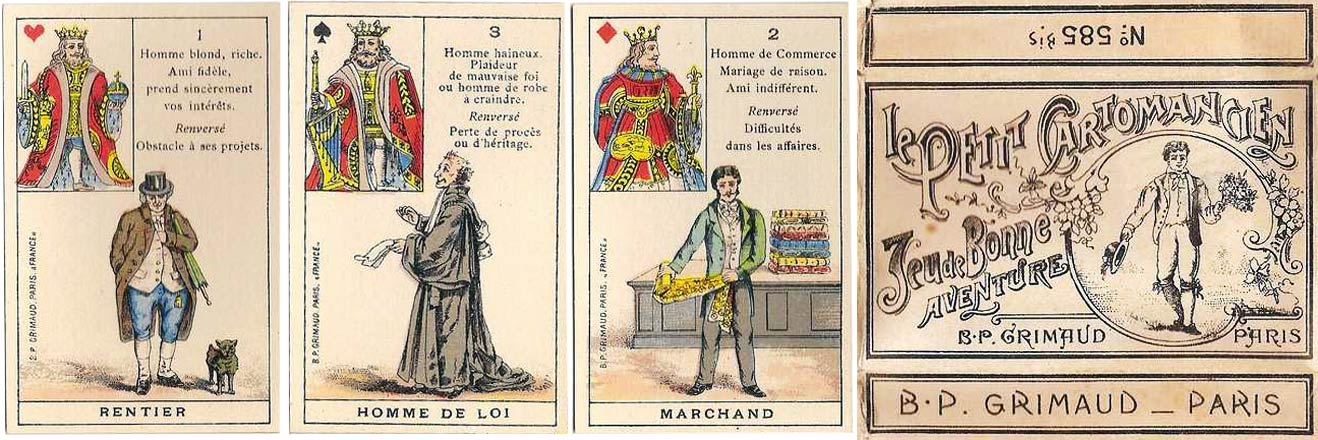
Above: three cards and wrapper from "Le Petit Cartomancien" fortune-telling cards manufactured by B.P. Grimaud, Paris. The miniature playing cards in the top corners depict full-length 'Paris' type courts, alongside contain divinatory interpretations with images of different personalities below. See more →
If you would like to produce a home-made deck of Fortune-telling cards, download: Livre du Destin or Book of Fate a nineteenth century French Cartomancy deck, with titles in French and English, published in Paris, c.1890. 32 cards. Download the entire deck (21 MB) as large size images, suitable for desk-top publishing into hand-made pack. Images courtesy Gilles Daigle.
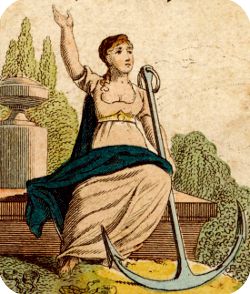
REFERENCES & RESOURCES
See Mary Greer's Tarot Blog for more details and references about divination with cards.
Etteilla: “Maniere de se recreer avec un jeu de cartes”, Amsterdam & Paris, 1770. Digital copy at Bibliothèque nationale de France►
Keizer, Lewis: The Esoteric Origins of Tarot: more than a wicked pack of cards, included in The Underground Stream by Christine Payne Towler, Noreah Press, 1999. Can be found online►

By Simon Wintle
Member since February 01, 1996
I am the founder of The World of Playing Cards (est. 1996), a website dedicated to the history, artistry and cultural significance of playing cards and tarot. Over the years I have researched various areas of the subject, acquired and traded collections and contributed as a committee member of the IPCS and graphics editor of The Playing-Card journal. Having lived in Chile, England, Wales, and now Spain, these experiences have shaped my work and passion for playing cards. Amongst my achievements is producing a limited-edition replica of a 17th-century English pack using woodblocks and stencils—a labour of love. Today, the World of Playing Cards is a global collaborative project, with my son Adam serving as the technical driving force behind its development. His innovative efforts have helped shape the site into the thriving hub it is today. You are warmly invited to become a contributor and share your enthusiasm.
Related Articles

Tarot hiéroglyphique égyptien
The design of the cards draws inspiration from various religious and philosophical traditions merged...

Oracle Rock
Cartomantic set depicting rock and pop stars, designed by La Rata, with a book by Virginie Despentes...

Eki karuta
Japanese fortune-telling cards based on I Ching, with bold, modern designs.

Mademoiselle Lenormand
XIX century ‘Mlle Lenormand’ cartomancy deck by Daveluy, Bruges.

Il Vostro Destino
Italian fortune-telling pack produced by Viassone and later by Masenghini.

Fate fortune telling cards
Fate fortune telling cards published by Merrimack Publishing Corporation, USA.

Cartomancy deck by Johann Ernst Backofen
German-suited Cartomancy deck published by Johann Ernst Backofen, Nürnberg.

French Cartomancy cards, c.1830
French Cartomancy cards published by J. Gaudais; printed by Mansion, Paris, c.1830.

Le Nuove Minchiate di Firenze
Costante Costantini's second Minchiate deck, “Le Nuove Minchiate di Firenze”, was published by Solle...

Le carte della Fortuna
Modern Italian fortune-telling pack from 1975, with designs by Sergio Ruffolo.

Art Nouveau Oracle
A Lenormand-type fortune-telling pack in the Art Nouveau style.

Costumes des Peuples Étrangers
Costumes des Peuples Étrangers & Jeu d’Or dedicated to young people and likely used for games and fo...

Nile Fortune cards
Nile Fortune cards no.68x published by the United States Playing Card Company, USA, 1904.

Lenormand Wahrsage-Karten No. 55
Conventional Lenormand designs on a pack from Piatnik but with unconventional numbering.

Le Nouvel Etteilla
“Le Nouvel Etteilla” cartomancy deck published in Paris by La Veuve Gueffier, 1806.

Le Petit Oracle des Dames
Le Petit Oracle des Dames ou Récréation des Curieux, Paris, 1807.
Most Popular
Our top articles from the past 28 days


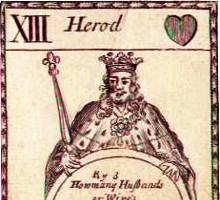
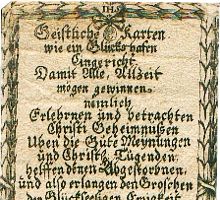

















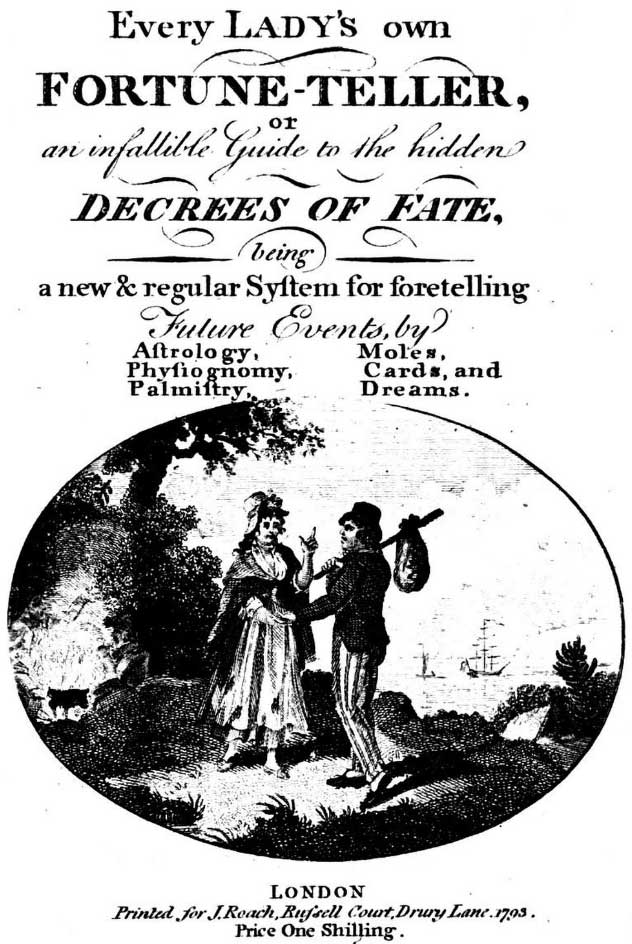

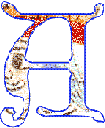 rtists and seers are drawn to design even more compelling fortune telling and tarot packs, drawing upon esoteric philosophies,
rtists and seers are drawn to design even more compelling fortune telling and tarot packs, drawing upon esoteric philosophies, 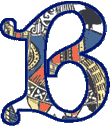 est known amongst the French cartomantic fortune tellers of the revolution era was Madame Lenormand, who had designed her own variant version of the tarot, and was said to have been consulted by Napoleon and predicted military disaster. There are several popular fortune telling narratives similar to the Madame Lenormand account found in booklets. It usually runs like this:
est known amongst the French cartomantic fortune tellers of the revolution era was Madame Lenormand, who had designed her own variant version of the tarot, and was said to have been consulted by Napoleon and predicted military disaster. There are several popular fortune telling narratives similar to the Madame Lenormand account found in booklets. It usually runs like this: